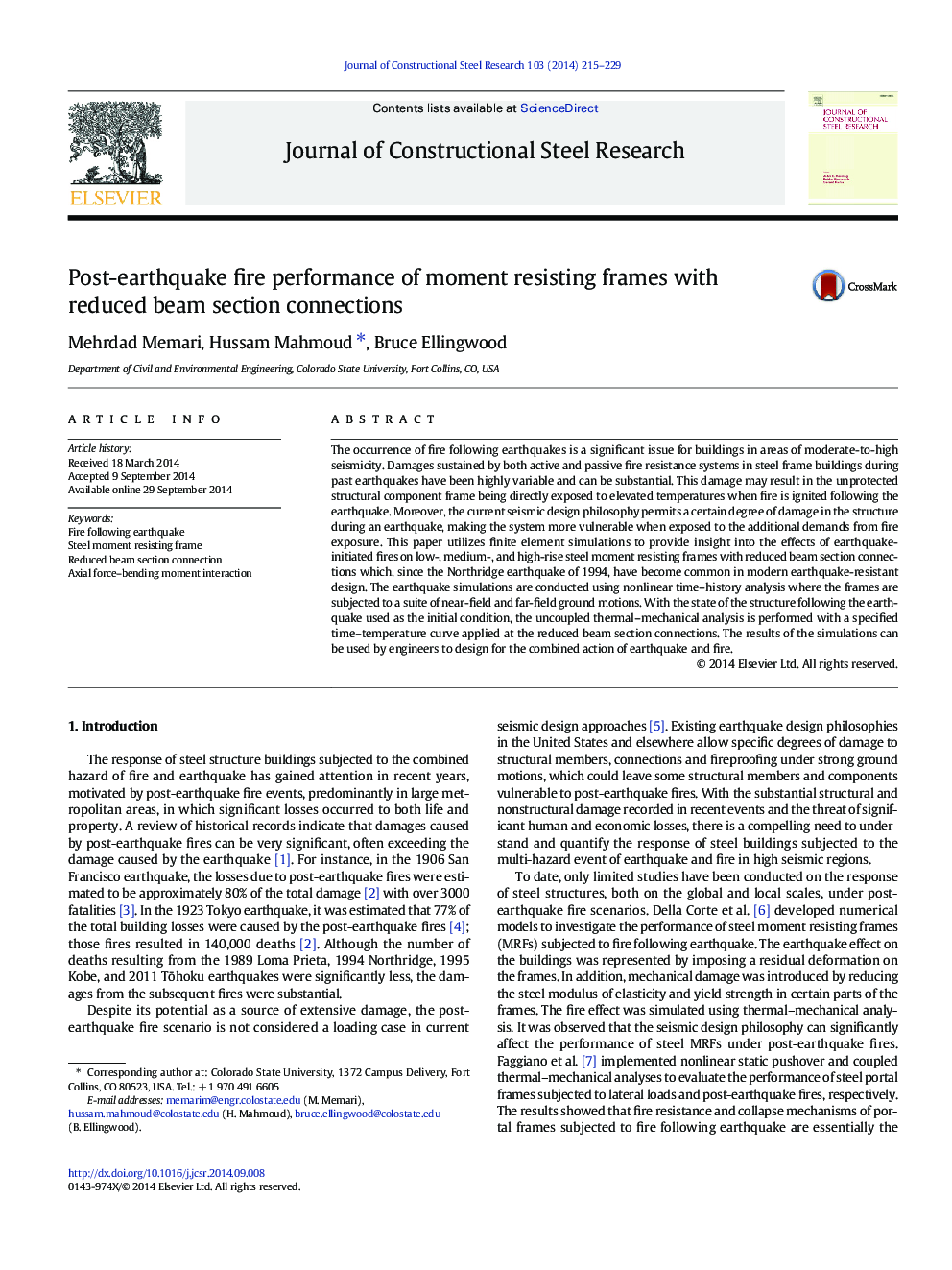| کد مقاله | کد نشریه | سال انتشار | مقاله انگلیسی | نسخه تمام متن |
|---|---|---|---|---|
| 284540 | 509151 | 2014 | 15 صفحه PDF | دانلود رایگان |
• The dynamic analysis resulted in Life Safety performance level in 80% and Collapse Prevention performance level in 20%.
• Post-earthquake fires mostly resulted in smaller Interstory Drift Ratios when compared to those from the earthquakes.
• The performance is not affected by the post-earthquake fire, regardless of the characteristic of the earthquake record.
• The potential for system collapse was not imminent as a result of applied post-earthquake fires.
• Beams and columns designs are controlled by the axial forces-moment interaction and by moments, respectively.
The occurrence of fire following earthquakes is a significant issue for buildings in areas of moderate-to-high seismicity. Damages sustained by both active and passive fire resistance systems in steel frame buildings during past earthquakes have been highly variable and can be substantial. This damage may result in the unprotected structural component frame being directly exposed to elevated temperatures when fire is ignited following the earthquake. Moreover, the current seismic design philosophy permits a certain degree of damage in the structure during an earthquake, making the system more vulnerable when exposed to the additional demands from fire exposure. This paper utilizes finite element simulations to provide insight into the effects of earthquake-initiated fires on low-, medium-, and high-rise steel moment resisting frames with reduced beam section connections which, since the Northridge earthquake of 1994, have become common in modern earthquake-resistant design. The earthquake simulations are conducted using nonlinear time–history analysis where the frames are subjected to a suite of near-field and far-field ground motions. With the state of the structure following the earthquake used as the initial condition, the uncoupled thermal–mechanical analysis is performed with a specified time–temperature curve applied at the reduced beam section connections. The results of the simulations can be used by engineers to design for the combined action of earthquake and fire.
Journal: Journal of Constructional Steel Research - Volume 103, December 2014, Pages 215–229
